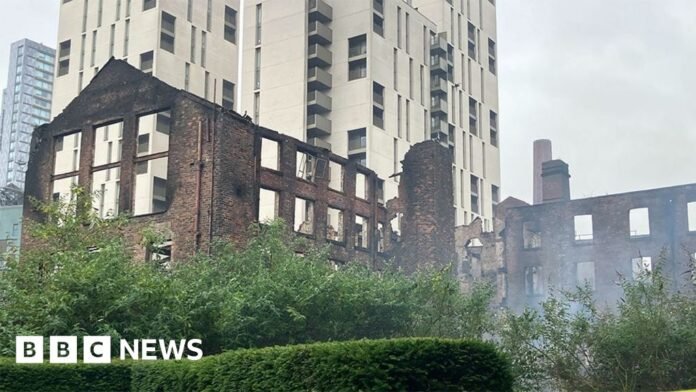BBC News, Manchester
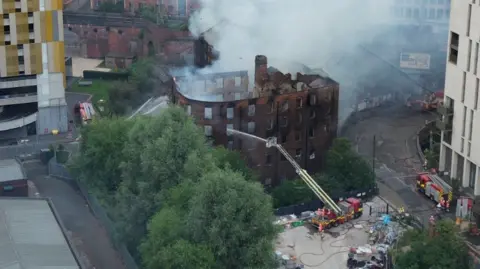 JMG Press
JMG PressA building on the site of what was believed to be Manchester’s oldest mill is now a smouldering ruin after a major fire.
The Hotspur Press building on Cambridge Street, close to Manchester Oxford Road railway station, was destroyed by a fire on Monday, leading to its partial collapse.
It resulted in the cancellation of trains through Manchester Oxford Road station with “residual” disruption expected until 09:30 BST, National Rail said.
The Victorian structure had fallen into a dilapidated state since the printing press closed down in 1996, and stood in contrast with some of the modern city blocks surrounding it.
 JMG Press
JMG PressHowever, despite various delays, it had been earmarked for a major development scheme.
Opened in the 1800s on the banks of the River Medlock, the building started life as a cotton mill, known as Medlock Mill.
It was later repurposed as a printing press in 1902, and remained in business for 94 years.
After years of failed attempts to redevelop the site, London-based developer Manner took on the building in 2020, and began working on new plans.
Last May, the firm was given planning permission from Manchester City Council to turn the building into a 37 storey, 595 bed block of student flats.
 MattHarrop/Geograph
MattHarrop/GeographBut the scheme was delayed after Manner twice changed its designs, and earlier this month said it was planning to submit fresh proposals to the council.
The firm had vowed to “draw on the historical roots of the site” for the project, which would have involved some of the original building being demolished.
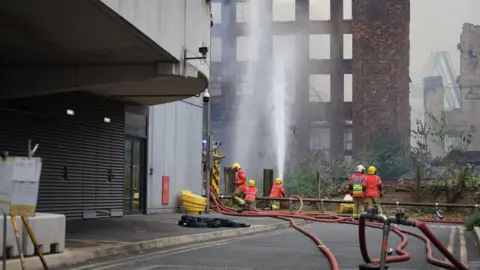 JMG Press
JMG PressWhile the original application for planning permission was granted, it attracted opposition from Manchester Metropolitan University (MMU) over the lack of affordable units.
MMU had told councillors it had concerns that less than 20% of units would have been available at a discounted rent and also “the predominance of studio units which are less affordable than cluster units”.
But in a report to the planning committee, council officials also wrote it was estimated the development would add £3.6m to the local economy.
The report, in May 2024, added: “This proposal would redevelop a derelict and vacant, low quality brownfield site close to the Oxford Road Corridor.”
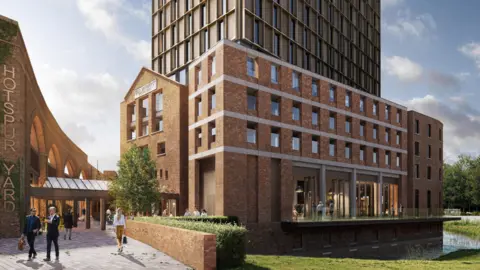 LDRS
LDRSThe proposed student tower was initially intended to be clad in redbrick panels, but that was changed earlier this year to be anodised metal, appearing to be grey-silver.
Manner had since revised its plans for the building to include a bronze finish on the exterior.
The firm denied the change was related to its profit margins, with Manner boss Richard James telling the BBC in June that the firm “wanted to listen and take on board feedback”.
Manner has confirmed it is aware of the fire but has yet to comment further.
GMFRS said on Monday evening it had deployed 20 fire engines to the fire, including two aerial units.
It said the fire spread to a neighbouring apartment building,1 Cambridge Street, which was evacuated.
An investigation into the cause of the fire was expected to begin.
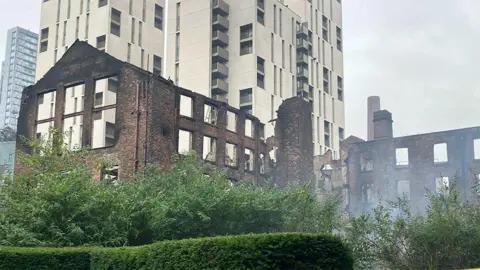
Writer and Manchester tour guide Jonathan Schofield said: “It’s a shock.”
“I’ve walked past for years and years. I’ve guided it, talked about it and now it’s a shell.
“For this to go up in such a dramatic way, it is a shame.”
Pat Karney, the city council’s city centre manager, said the building was “a piece of Manchester” and “a very famous building”.
“It’s incredibly dangerous to have fires in city centres. We’ll have to learn lessons.
“You can’t ignore the dangers. The buildings are too close to each other.”
Manchester City Council leader Bev Craig said the authority had been working closely with emergency services and evacuated residents were being supported at a nearby rest centre.
She said: “A cordon remains in place in the area and we thank people for taking fire service advice to avoid the area while crews continue to work at the site.
“Those living nearby should continue to keep windows and doors shut to avoid smoke.”



